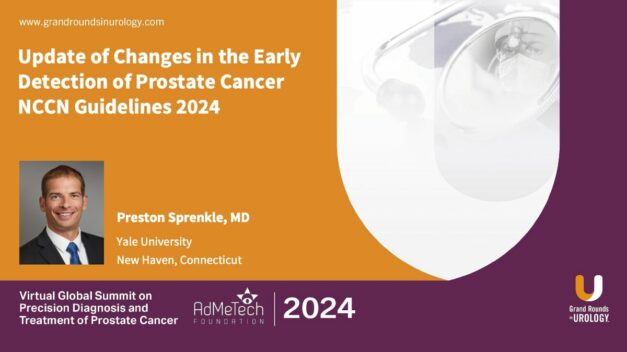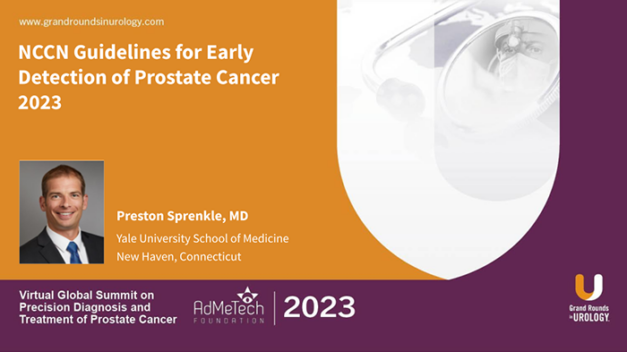Update of Changes in the Early Detection of Prostate Cancer NCCN Guidelines 2024
Preston C. Sprenkle, MD, Associate Professor of Urology at Yale University, delivers a comprehensive update on the 2024 National Comprehensive Cancer Network (NCCN) guidelines for early detection of prostate cancer.
In this 9-minute presentation, Dr. Sprenkle highlights the importance of early detection in identifying aggressive cancers while avoiding overtreatment of indolent disease, with shared decision-making and individualized risk assessment remaining central to guiding screening and treatment decisions. Refinements include clearer recommendations for younger patients with low PSA levels and adjusted screening intervals for men over 75. Genetic risk assessment and counseling are emphasized.
Sprenkle shares that the guidelines now recognize MRI as the standard of care for pre-biopsy evaluation. High-quality MRI imaging and expert interpretation are underscored to address variability in diagnostic practices. Systematic and MRI-targeted biopsies are preferred for improved accuracy in cancer detection. Dr. Frankel underscores the importance of integrating advanced imaging and equitable access to care to transform prostate cancer outcomes.
Read More




